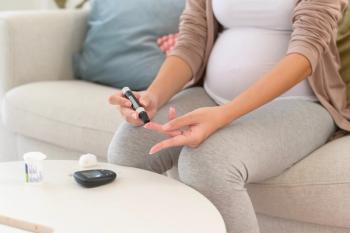
Community Health Care Workers Connect Children With Asthma to Care in Trigger Environments
Key Takeaways
- Community health workers enhance asthma control in children by integrating care across home, school, and community environments.
- The study revealed significant racial disparities in asthma outcomes, with Black children facing higher morbidity and mortality rates.
Community health care workers help support both primary care and school settings by assisting with medication administration and communications with staff.
A new study published in JAMA Pediatrics shows that community health workers (CHW) can play a significant role when integrated in environments where children can encounter asthma triggers. According to the authors, the care coordination provided by CHWs can be a cost-effective way to achieve better asthma control in children.1
There are persistent disparities in rates of asthma among American children, according to the investigators. Particularly, Black children are about 3 times more likely to be hospitalized because of asthma and have a death rate about 7 times higher compared with White children who have asthma. Asthma symptoms can vary for children at different times of the day and in different environments, and although they may be able to control symptoms at home, children may encounter triggers at school that can exacerbate their symptoms.1
According to the authors, this study was a hybrid effectiveness/implementation trial that used a 2 × 2 factorial, cluster randomized clinical trial design. It consisted of 36 schools crossed with participant-level randomization into a clinic-based CHW intervention. The study was conducted from May 2018 to June 2022, with interventions taking place in primary care offices, homes, and 36 West Philadelphia, Pennsylvania public and charter schools. Additionally, children aged 5 to 13 years of age with uncontrolled asthma who had 1 systemic steroid for asthma in the past year or 1 emergency department visit were recruited from local primary care practices.2
The investigators aimed to determine whether children receiving CHW-delivered evidence-based interventions when coordinated across primary care and school settings would achieve better asthma control compared with children receiving standard of care interventions. Intervention methods included asthma management, trigger mediation, and care coordination which occurred in schools, homes, and primary care settings. Additionally, the Yes We Can Children’s Asthma Program, Open Airways For Schools Plus, and school-based asthma therapies were implemented. The enrolled children were followed up for 12 months.2
The main outcome measures were improvements in asthma control, which was measured by the Asthma Control Questionnaire (ACQ). Additionally, the mean difference between groups at 1 year following randomization was compared with the groups’ baselines. The authors also assessed race and ethnicity because Black and Hispanic or Latino children have a higher asthma morbidity.2
According to the findings, a total of 626 participants with a mean age of 8.7 years were enrolled in the final analysis, of which most (n = 363; 58%) were male. Additionally, most study participants were insured with Medicaid (87%), 601 participants (96%) self-identified as Black, and 14 (2%) self-identified as having Hispanic or Latino ethnicity whereas the remainder (n = 612; 98%) were of non-Hispanic ethnicity.2
The mean baseline asthma control questionnaire score was 1.4, with approximately 47% of participants (n = 294) having a score greater than or equal to 1.3, which indicates poor asthma control. In the year prior to enrollment, approximately 52% of participants (n = 326) reported experiencing an asthma-related emergency department visit, 34% (n = 213) had an asthma-related hospitalization, and all participants but 1 reported at least 1 asthma-related systemic steroid prescription. The baseline participant characteristics—including demographics and baseline asthma morbidity—were similar between the intervention groups.2
All groups experiencing the greatest absolute improvement in asthma control score within the first 3 months, with the combined intervention group demonstrating the greatest absolute reduction. All groups showed statistically significant improvements in asthma control from baseline to month 12 (P− group: −0.46, 95% CI −0.58 to −0.33; P+ group: −0.57, 95% CI −0.74 to −0.44; S− group: −0.47, 95% CI −0.58 to −0.35; and S+ group: −0.59, 95% CI −0.74 to −0.44); however, only the active intervention groups exceeded the minimal clinically important difference (0.5) when compared with their baseline averages.2
“This study demonstrated the feasibility and effectiveness of community health workers connecting these environments to make care more accessible for kids, and future work will make sure that everyone has a seat at the table when making decisions concerning asthma prevention,” Tyra Bryant-Stephens, MD, medical director of the Community Asthma Prevention Program and chief health equity officer of the Center for Health Equity at Children’s Hospital of Philadelphia, said in a news release.1
Further, participants in the active intervention groups experienced greater improvements in asthma control from baseline to month 12, but these were not considered statistically significant or clinically meaningful. The largest absolute difference in differences were between participants who received the combined clinic- and school-level intervention group compared with the usual care group (−0.22; 95% CI −0.48 to 0.04).2
“Children are in various environments during the day, and we have to think about a holistic and connected approach to reducing asthma across all environments a child may encounter,” Bryant-Stephens said in the news release. “We want to make sure there is evidence-based asthma care, including increased adherence and availability of controller medication, wherever children may be and that everyone is taking steps to make every environment a healthier one.”1
REFERENCES
1. Children’s Hospital of Philadelphia. Children’s Hospital of Philadelphia researchers find community health workers play critical role in coordinating asthma care across home, school and community. News release. November 12, 2024. Accessed November 20, 2024. https://www.eurekalert.org/news-releases/1064603
2. Bryant-Stephens T, Kenyon CC, Tingey C, et al. Community Health Workers Linking Clinics and Schools and Asthma Control: A Randomized Clinical Trial. JAMA Pediatr. Published online October 21, 2024. doi:10.1001/jamapediatrics.2024.3967
Newsletter
Stay informed on drug updates, treatment guidelines, and pharmacy practice trends—subscribe to Pharmacy Times for weekly clinical insights.








































































































































































































